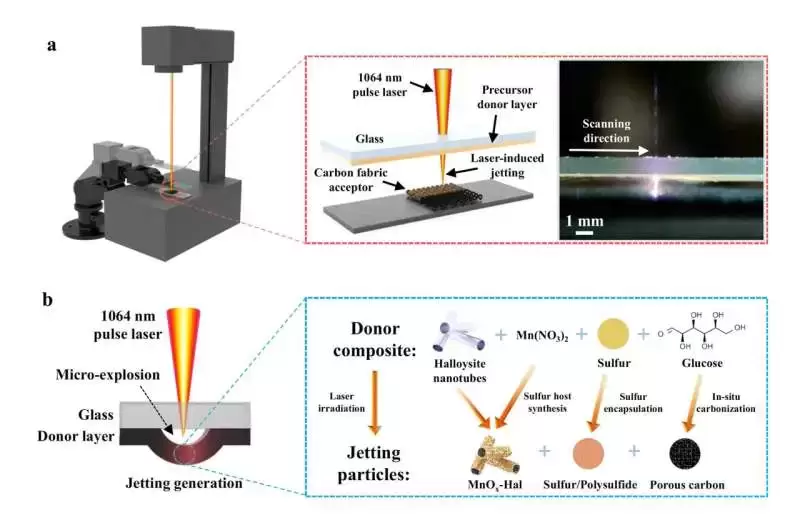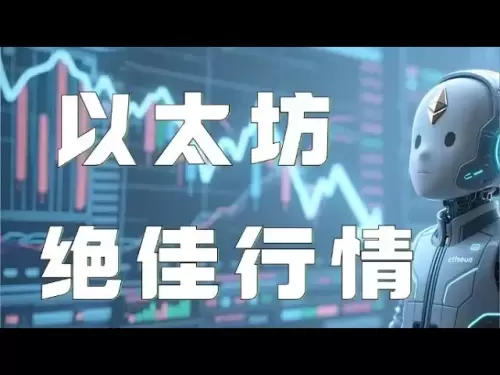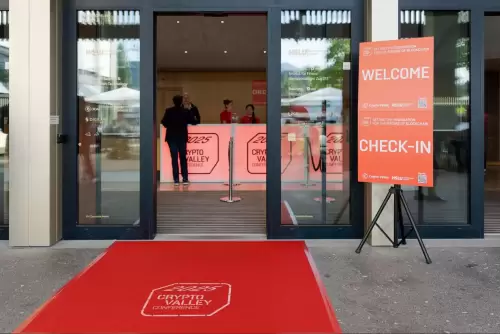 |
|
 |
|
 |
|
 |
|
 |
|
 |
|
 |
|
 |
|
 |
|
 |
|
 |
|
 |
|
 |
|
 |
|
 |
|
一個研究團隊開發了一種創新的單步激光打印技術,以加速鋰硫電池的製造。

A research team has developed a single-step laser printing technique for the rapid manufacturing of lithium-sulfur batteries. This technique integrates the commonly time-consuming active materials synthesis and cathode preparation in a nanosecond-scale laser-induced conversion process, and is set to future industrial production of printable electrochemical energy storage devices.
一個研究團隊開發了一種單步激光打印技術,用於快速生產鋰硫電池。該技術將通常耗時的活性材料合成和陰極製備整合到納秒尺度激光誘導的轉換過程中,並將其設置為未來的可打印電化學能源存儲設備的工業生產。
The team was led by Prof. Mitch Li Guijun, Assistant Professor from the Division of Integrative Systems and Design at the Hong Kong University of Science and Technology (HKUST). The findings are published in the journal Nature Communications.
該團隊由香港科學技術大學(HKUST)綜合系統與設計部助理教授Mitch Li Guijun教授領導。這些發現發表在《自然通訊》雜誌上。
Lithium-sulfur batteries are promising candidates to supersede existing lithium-ion batteries due to sulfur cathodes’ high theoretical energy density. To ensure the rapid conversion of sulfur species, these cathodes are typically composed of active materials, host materials (or catalysts), and conductive materials.
鋰硫電池是由於硫磺陰極高理論能量密度而有望取代現有的鋰離子電池。為了確保硫種的快速轉化,這些陰極通常由活性材料,宿主材料(或催化劑)和導電材料組成。
However, the fabrication of host materials and preparation of sulfur cathodes often involve complicated, multistep, and labor-intensive processes that require varying temperatures and conditions, which poses challenges for efficient and low-cost industrial production.
但是,宿主材料的製造和硫磺陰極的製備通常涉及需要不同溫度和條件的複雜,多步驟和勞動密集型過程,這給有效和低成本的工業生產帶來了挑戰。
To overcome these challenges, Prof. Li’s team developed a single-step laser printing technique for the rapid manufacturing of integrated sulfur cathodes.
為了克服這些挑戰,李教授的團隊開發了一種單步激光打印技術,用於快速製造綜合硫硫磺的陰極。
During this high-throughput laser-pulse irradiation process, the precursor donor is activated, performing jetting particles that include in-situ synthesized halloysite-based hybrid nanotubes (host material), sulfur species (active material), and glucose-derived porous carbon (conductive component). The mixture is printed onto a carbon fabric acceptor, forming an integrated sulfur cathode. Notably, the laser-printed sulfur cathodes demonstrate outstanding performance in both coin and pouch lithium-sulfur cells.
在這個高通量激光滲水輻照過程中,前體供體被激活,進行噴氣顆粒,其中包括基於原位的基於Halloysite的基於Halloysite的雜化雜種納米管(宿主材料),硫(活性材料)和葡萄糖衍生的多孔碳(導電組件)。將混合物印在碳織物受體上,形成綜合的硫陰極。值得注意的是,激光打印的硫陰道在硬幣和小袋鋰硫細胞中均表現出出色的性能。
Prof. Li. said:
李教授。說:
“Traditional manufacturing processes of a cathode/anode in ion battery usually contain the synthesis of active materials (sometimes combined with host material/ catalyst), the preparation of mixture slurry, and the assembly of cathode/anode,
“離子電池中陰極/陽極的傳統製造過程通常包含活性材料的合成(有時與宿主材料/催化劑結合),混合物漿料的製備以及陰極/陽極的組裝,
“These steps are usually carried out separately under different temperatures and conditions because the materials behave differently. As a result, the whole process can take tens of hours or even several days.”
“這些步驟通常在不同的溫度和條件下分別進行,因為材料的行為不同。因此,整個過程可能需要數十小時甚至幾天。”
Prof. Li said,
李教授說,
“Our newly developed laser-induced conversion technology offers a way to combine these processes into a single step at nanosecond speeds.
“我們新開發的激光誘導的轉換技術提供了一種將這些過程以納秒速度相結合到一個步驟中的方法。
“The printing speed can achieve about 2 cm2/minute using only a single beam laser. A 75 × 45 mm2 sulfur cathode can be printed within 20 minutes and supply power for a small screen for several hours when assembled into a lithium-sulfur pouch cell.”
“打印速度只能使用單個梁激光器才能達到約2 cm2/分鐘。75×45 mm2硫的陰極可以在20分鐘內打印出75×45 mm2的硫磺陰極,並在組裝成小屏幕時為小屏幕提供數小時的電源。”
Dr. Yang Rongliang, the first author of this work and former postdoctoral fellow at HKUST, added,
這項工作的第一作者Yang Rongliang博士,Hkust的前博士後研究員,他補充說,
“These intriguing findings generated from our study on laser-material interaction.
“這些有趣的發現是我們關於激光材料相互作用的研究產生的。
“The laser-induced conversion process can be characterized as an ultra-concentrated thermal phenomenon. The irradiated materials undergo a complex transient heating and cooling process, with theoretical transient temperatures reaching up to thousands of degrees Kelvin.”
“激光誘導的轉化過程可以表徵為超濃縮的熱現象。輻照的材料經歷了複雜的瞬時加熱和冷卻過程,理論上的瞬態溫度達到了數千度開爾文。”
The precursor materials decompose, and the decomposed particles recombine to form new materials.
前體材料分解,分解的顆粒重新組合以形成新材料。
“This ultra-concentrated thermal process not only enables the formation and combination of materials with different natures, but also drives the concomitant micro-explosions that facilitate the jetting and transferring of forming particles.”
“這種超濃縮的熱過程不僅可以使材料具有不同的本質的形成和組合,而且還驅動了促進形成顆粒的噴射和轉移的伴隨微探索。”
免責聲明:info@kdj.com
所提供的資訊並非交易建議。 kDJ.com對任何基於本文提供的資訊進行的投資不承擔任何責任。加密貨幣波動性較大,建議您充分研究後謹慎投資!
如果您認為本網站使用的內容侵犯了您的版權,請立即聯絡我們(info@kdj.com),我們將及時刪除。
-

- 2025年領先的加密預售不僅僅是炒作,它們提供了真正的實用性
- 2025-06-14 11:55:12
- 本文不代表投資建議。此頁面上的內容和材料僅用於教育目的。
-

-

-

-

- 隨著所有前100個硬幣的創紀錄價格上漲,加密市值下跌1%至$ 3.58T
- 2025-06-14 11:45:12
- 加密貨幣市場如今又增加了,幾乎所有前100個硬幣在過去24小時內都呈上漲。
-

- BYBIT快速跟踪付款和支出獎勵,並通過統一的BYBIT PAY和BYBIT卡的統一計劃
- 2025-06-14 11:45:12
- 拜比特(Bybit)是全球第二大加密貨幣交易所通過交易量的交換
-

-

- 智能錢包將詩歌世界的治理和實用程序將
- 2025-06-14 11:40:12
- Verseworld是一種超現實的元元融合現實世界的文化,並具有沉浸式數字體驗,已經推出了其本土代幣詩歌
-

- ATW Partners和DWF Labs在首次結束時投資了5500萬美元
- 2025-06-14 11:35:13
- 預計TRNR將擁有美國公開列出的加密貨幣,專注於AI-Token






























































